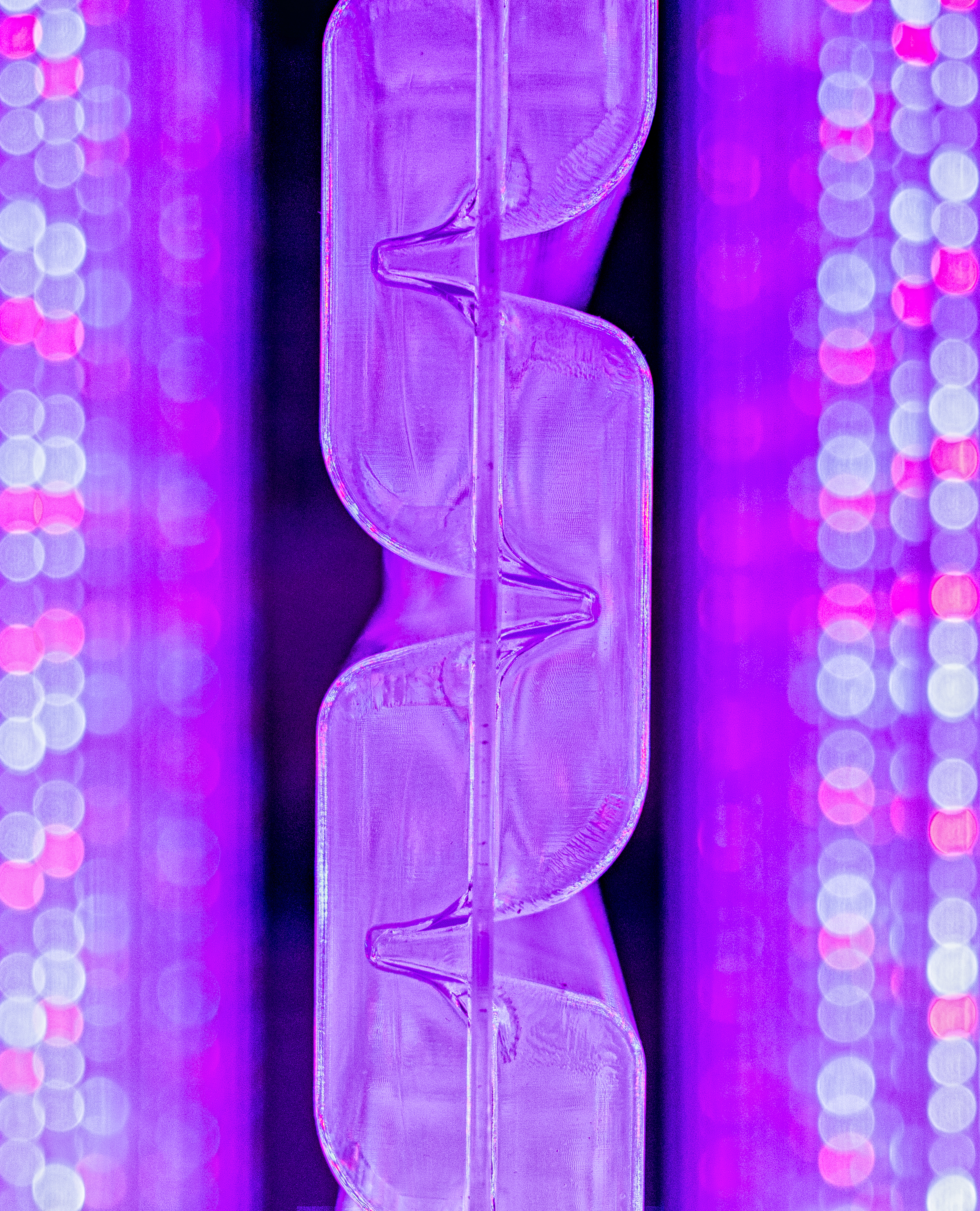|
Liquid3
Liquid 3 (also known as Liquid Trees) is a clean energy photobioreactor project designed to replace the function of trees in heavily polluted urban areas where planting and growing real vegatation is not viable. The project was designed by the Institute for Multidisciplinary Research at the University of Belgrade. The United Nations Development Programme (UNDP) selected Liquid 3 as an "innovative" solution for "Climate Smart Urban Development," a project produced in partnership with Serbia's Ministry of Environmental Protection and the municipality of Stari Grad. Overview The Liquid3 algal photobioreactor is powered by solar panels. The glass tank is embedded into a structure that acts as a bench and is outfitted with other utilities such as charging ports. Similar to other photobioreactors, air is sucked through a pressure pump and fed to the microalgae, with oxygen released as a byproduct. Additionally, the Liquid 3 bioreactor can filter out heavy metal contaminants in the ... [...More Info...] [...Related Items...] OR: [Wikipedia] [Google] [Baidu] |
CityTrees
CityTrees, also known as Robot Trees, Robo-Trees, and Moss Walls, are large air filters installed in many European cities, as well as Hong Kong, that remove pollutants from the Atmosphere of Earth, atmosphere. CityTrees are large structures covered in moss. The filters intend to curb harmful emissions from nearby traffic congestion, including fine dust particles and nitrogen oxides, of which they are claimed to take in 80%, although this has been disputed by some experts. The structures have been criticised, especially in Cork (city), Cork, Ireland, for their perceived ineffectiveness, possible wastage of energy and water, and costs of around €400,000 per year. Following this criticism, a Cork City Council debate on the CityTrees scheme was held on 13 November 2023. Councillors decided that the data available for the CityTrees was too inconclusive, partly due to the windy conditions where they were placed, and so they will remain for another 6–12 months. History and develo ... [...More Info...] [...Related Items...] OR: [Wikipedia] [Google] [Baidu] |
Photobioreactor
image:Bioreaktor quer2.jpg, Moss bioreactor, Moss photobioreactor to cultivate mosses like ''Physcomitrella patens'' at the laboratory scale A photobioreactor (PBR) refers to any cultivation system designed for growing Photoautotrophism, photoautotrophic organisms using artificial light sources or solar light to facilitate photosynthesis. PBRs are typically used to cultivate microalgae, cyanobacteria, macroalgae, and some mosses. PBRs can be open systems, such as raceway ponds, which rely upon natural sources of light and carbon dioxide. Closed PBRs are flexible systems that can be controlled to the physiological requirements of the cultured organism, resulting in optimal growth rates and purity levels. PBRs are typically used for the cultivation of bioactive compounds for biofuels, pharmaceuticals, and other industrial uses. Open systems image:Microalgenkwekerij te Heure bij Borculo.jpg, Open raceway pond The first approach for the controlled production of phototrophic organisms was ... [...More Info...] [...Related Items...] OR: [Wikipedia] [Google] [Baidu] |
University Of Belgrade
The University of Belgrade ( sr, / ) is a public university in Serbia. It is the oldest and largest modern university in Serbia. Founded in 1808 as the Belgrade Higher School in revolutionary Serbia, by 1838 it merged with the Kragujevac-based departments into a single university. The university has around 97,700 enrolled students and over 4,800 academic staff members. Since its founding, the university has educated more than 378,000 bachelors, around 25,100 magisters, 29,000 specialists and 14,670 doctors. The university comprises 31 faculties, 12 research institutes, the university library, and 9 university centres. The faculties are organized into four groups: social sciences and humanities; medical sciences; natural sciences and mathematics; and technological sciences. On the prestigious ''Shanghai Ranking'' (ARWU), the University of Belgrade ranks between 401st and 500th place, according to the most recent (2018) global ranking. In 2014, it ranked 151–200, specific ... [...More Info...] [...Related Items...] OR: [Wikipedia] [Google] [Baidu] |
Smog Tower
Smog towers or smog free towers (see below for other names) are structures designed as large-scale air purifiers to reduce air pollution particles (smog). This approach to the problem of urban air pollution involves air filtration, and removal of suspended mechanical particulates such as soot, and requires energy or power. Another approach is to remove urban air pollution by a chimney effect in a tall stack, or updraft tower, which may be either filtered or simply released at altitude as with a solar updraft tower, and which may not require operating energy beyond what may be produced by the updraft. World’s first air cleaning tower The world's first smog free tower was built by Dutch artist Daan Roosegaarde. It was unveiled in September 2015 in Rotterdam and later similar structures toured in Beijing and Tianjin, China, Kraków, Poland and Anyang, South Korea. The 7-meter (23 ft) tall tower uses patented positive ionisation technology and is expected to clean 30,000 m3 ... [...More Info...] [...Related Items...] OR: [Wikipedia] [Google] [Baidu] |
Belgrade
Belgrade ( , ;, ; Names of European cities in different languages: B, names in other languages) is the Capital city, capital and List of cities in Serbia, largest city in Serbia. It is located at the confluence of the Sava and Danube rivers and the crossroads of the Pannonian Basin, Pannonian Plain and the Balkan Peninsula. Nearly 1,166,763 million people live within the administrative limits of the City of Belgrade. It is the third largest of all List of cities and towns on Danube river, cities on the Danube river. Belgrade is one of the List of oldest continuously inhabited cities, oldest continuously inhabited cities in Europe and the world. One of the most important prehistoric cultures of Europe, the Vinča culture, evolved within the Belgrade area in the 6th millennium BC. In antiquity, Thracians, Thraco-Dacians inhabited the region and, after 279 BC, Celts settled the city, naming it ''Singidunum, Singidūn''. It was Roman Serbia, conquered by the Romans under the reign ... [...More Info...] [...Related Items...] OR: [Wikipedia] [Google] [Baidu] |



.jpg)